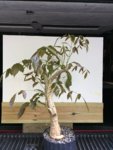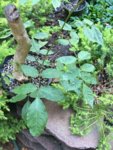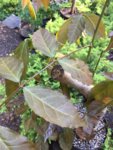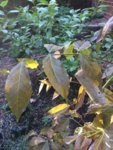WNC Bonsai
Omono
I have two wisteria that I collected this spring and both have survived. I think they are W. sinensis given the 5-9 leaflets on both plants. My question though concerns leaf color. The smaller plant has the typical green leaves and petioles. The larger one on the other hand has leaves with more of a copper or bronze cast to them and more of a reddish petiole. Has anyone seen this before? They have both been treated the same since collecting and are in the same light a foot or so apart. I am assuming they are oth the same species but just different cultivars but haven’t been able to find any info online about this. Here is the big plant.

And now the leaves of the smaller one

And the broze leaves of the big one



And now the leaves of the smaller one

And the broze leaves of the big one





